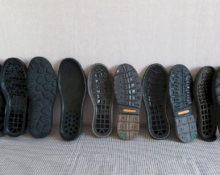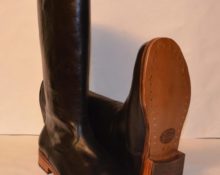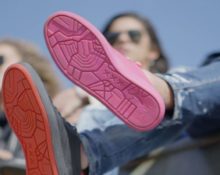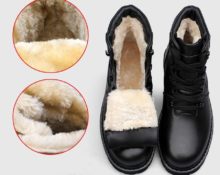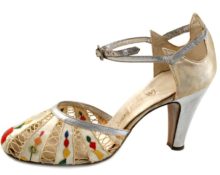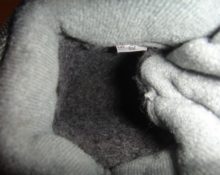As many people know, the material of manufacture plays a decisive role when choosing shoes. But at the same time, only the upper part of the product is subject to detailed inspection. As a rule, little attention is paid to the sole. And this is wrong, because she is exposed to maximum impact. The foot and the weight of a person press on it from above. Therefore, requirements are put forward for the material in terms of strength and comfort in use.
There are different types of soles: tunit, thermopolyurethane, rubber, leather, micropore, other varieties. In the article we will consider each of the existing options.

@shoesops.com
Types of shoe soles with characteristics
Each material distinguished by its performance qualities. All types have advantages and disadvantages, which I will discuss below.
Tunit (leather fiber)
The material is more often used for the manufacture of demi-season models. Externally, it is leather-like porous rubber. The peculiarity of tunit is in a special filler made from a substance of fibrous origin.
The main advantages of the material are:
- strength;
- abrasion resistance;
- immunity to temperature changes;
- Ease of use;
- duration of operation.
The disadvantages of the material include:
- heavy weight;
- lack of elasticity;
- lack of shock-absorbing properties.

@conhpol.pl
Rubber outsole
For several centuries this material has been used in the shoe industry. However, he has not lost his popularity at all. Modern technologies have improved the properties of rubber. In particular, manufacturers managed to increase the service life and make the weight of the boots much less.
The main advantages of the material:
- high strength;
- resistance to temperature changes;
- flexibility;
- practicality and comfort;
- no slipping.
Expressed disadvantages include:
- complexity of production;
- high price.
More often, rubber is used to make boots, sneakers, sneakers and boots.

@made-in-china.com
From a micropore
Rough and porous material. Often used in orthopedic shoes. Micropore is used in the production of sandals, shoes, boots and sneakers.
Main advantages: light weight, wear resistance, high degree of thermal insulation. The material prevents hypothermia in cold weather and overheating in hot weather. The disadvantages of micropores include: low strength and shock-absorbing properties, impossibility of use for winter shoes.
As the temperature drops to -20 ˚C, the micropore loses its elasticity or cracks.
PVC sole
This type is used to make shoes for the spring-summer season. They can often be seen in children's shoes and models for everyday wear. Designers love the material for the possibility of painting in different colors.Modern technologies offer the creation of different colors.
The advantages of PVC are:
- elasticity;
- high degree of thermal insulation;
- resistance to deformation;
- good shock absorption;
- strength.
The disadvantages are:
- impressive weight;
- inability to use for making winter shoes;
- poor adhesion to the upper part of shoes made of natural materials.
At the same time, the plastic bottom of boots is often used in shoe production.

@exportersindia.com
Polyurethane outsole
In-demand material. Surface treatment with special means significantly increases its elasticity. In foamed form, such a sole is flexible and durable.
The undeniable advantages of polyurethane include increased wear resistance, lightness and calm attitude to temperature changes. At the same time, the impossibility of using it in the production of winter shoes, strong slipping, and frequent occurrence of kinks at subzero temperatures are considered to be significant disadvantages.
Polyurethane soles are used in the production of moccasins and sneakers.
Thermopolyurethane (TPU)
The second name of the material is thermoplastic polyurethane. It is dense, smooth and weighty. Often used for the production of rough shoes with a thick bottom and high tread. Used to provide good traction.
Among the advantages are its aesthetic appearance, wear resistance and density. Among the disadvantages are insufficient thermal insulation, high weight and low elasticity.
These boots are not suitable for long walks.

@dhgate.com
Ethylene vinyl acetate (EVA)
To the touch, the rough material has a porous and soft structure. Soles with different types of tread are made from it. The edges are always smooth and even.The material is used in many types of shoes, except dress shoes. With time the sole takes on the streamlined shape of the foot, which provides additional comfort.
The advantages include: low weight, high heat-shielding properties, ease of use, good shock-absorbing properties. Among the disadvantages are: rapid wear and the inability to make soles for winter shoes from it. In addition, by molding to the shape of the foot, the shoe often becomes too loose.
Thermoplastic rubber (TEP)
A popular and sought after option. When molten, it is elastic. Thanks to this they create different types of soles – flat, grooved. In addition, such rubber is light and easy to use, absorbs well and lasts for a long time, maintaining its original appearance.
Among the disadvantages are reduced resistance to low temperatures, poor appearance with a small number of colors.

@amazon.com
Leather sole
Shoes made from natural raw materials differ markedly in price. It is not designed for everyday wear. From her produce dress shoes or house slippers.
The advantages of leather soles are:
- ease;
- comfort during use;
- elegant appearance.
Disadvantages of a natural base:
- high degree of wear;
- costly and complex care;
- tendency to deformation, which manifests itself with high humidity or improper storage.
Natural material allows your feet to “breathe”. This is a definite advantage for shoes with such a sole.

@pedrodelhierro.com
The sole protects the shoe from wear and tear, protecting the foot from external influences. Thanks to this detail in shoes Dirt and water do not penetrate, and mechanical pressure during walking is significantly softened. Therefore, when choosing shoes, the lower part is given no less attention than the upper part.


 0
0